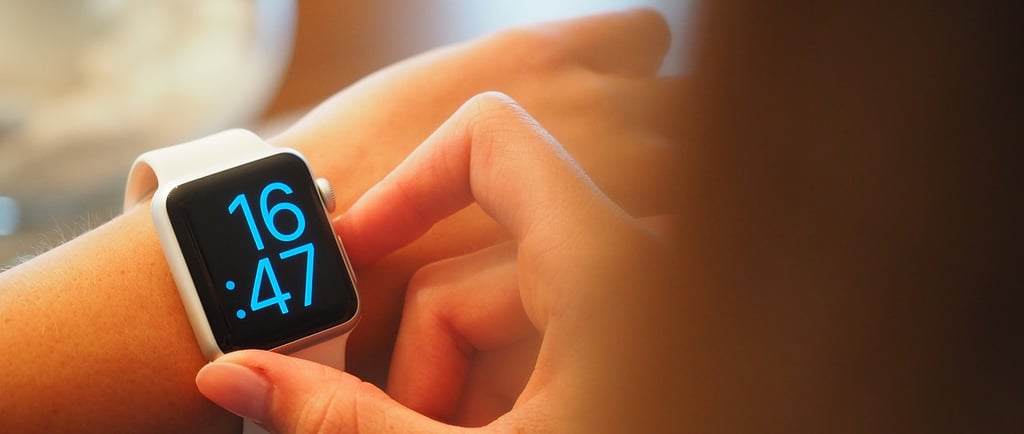The Digital Revolution💻 ✨Modern Timekeeping
Stories About Time: Measuring Moments Through History ⏳🌞🌕 from the chapter "Towards an Understanding of Linear Time" from the History Album. In this chapter we invite children to a journey through the fascinating evolution of timekeeping. Starting with observing the Sun🌞, and people who first noticed the movement of shadows to mark the day, to the people who noticed the phrases of the Moon 🌙, and tracked the lunar cycle to create months, these stories uncover humanity’s inventive ways of measuring moments.Children will marvel at ancient innovations, like sundials and lunar calendars, and explore cultural contributions, such as candle clocks 🕯️ and water clocks 🌊, that paved the way for modern timekeeping. Each story weaves history, science, and culture, showing how humans connected with the natural world to organize their lives. 🌿✨Through these narratives, children will see time not just as a number on a clock, or passing month on the callendar, but as a rich legacy of human curiosity and creativity. With hands-on activities like building sundials and journaling moon phases, they’ll become modern-day timekeepers, inspired to ask, “How did people measure time before clocks?” and “What can I discover about time?”This vivid exploration links the past to the present, sparking imagination and a deeper appreciation for the ingenuity of those who came before us. 🌍✨
HISTORY STORIES
12/30/20244 min read


Do you remember where our adventure with measuring time began? 🌞 It all started with the Sundials over 3500 BCE,tracking the shadows of the sun as it moved across the sky. But as the sun set and darkness fell, people realized they needed a way to measure time at night 🌌. This brought us to the Water Clock ~1500 BCE. Flowing water, steady and constant, became people's first companion for keeping track of time, even when the stars were the only light.
Over the years, people made clocks that didn’t just track the hours but also counted the days of the year, showed the changing seasons 🌱❄️, and even revealed the movements of the stars and planets 🌌✨. Clocks became more and more precise, ticking faster than you could blink. By taming the power of vibrating crystals 💎, measuring time became easier than ever before in any weather and any corner of the Earth.
But humans, with their endless curiosity, weren’t ready to stop there! Scientists asked: “What if we could measure time using the tiniest building blocks of the universe—atoms?” ⚛️✨ This led to the invention of the atomic clock, so precise it only loses one second every 100 million years! This type of clocks helped guide rockets 🚀, synchronize GPS 📡, and connect the entire world.
Still, the journey of timekeeping didn’t end there. People began to dream of clocks that were not just precise but also easy to read, glowing on your wrist, in your pocket, or even on your microwave! ⌚💡✨ How did the world transition into the clocks that don’t use ticking hands or gears 🕰️, but instead display time with glowing numbers. The first digital clocks appeared just 50 years ago, and they were revolutionary! Imagine a clock face lighting up with numbers that were easy to read,no need to figure out if it’s 5 minutes to 10 or 15 minutes past 9 💡. Simply read the glowing numbers!
📱Even better, digital clocks could connect to special machines floating in space 🌌🛰️—called satellites. These satellites work like time messengers, sending signals back to Earth to make sure everyone’s clocks show the exact same time, no matter where they are! It’s like carrying a personal time wizard wherever you go! 🕰️✨
A digital clock is a clock that doesn’t use ticking hands 🕰️. Instead, it shows the time with glowing numbers that light up like magic 💡! But how does it work,? Inside the clock, there are tiny “helpers” called circuits.
💡 The word “circuit” comes from the Latin word which means “a journey around” or “a loop”? That’s because a circuit is like a little highway 🛣️ where electricity zips around in a loop, delivering power to the clock’s parts. It’s like a tiny racetrack for electricity—vroom! 🚗⚡
At the heart of digital clocks is a small computer chip 💻—think of it as the brain of the clock! This tiny chip is powered by quartz crystals 💎. Remember how quartz vibrates 32,768 times per second? Those vibrations are like a secret handshake that sends signals to the chip. But what does the chip do with them?
💭 Imagine the chip as a math wizard wearing a tiny cape 🧙♂️✨! It counts every tick from the quartz crystal, grouping them into seconds, minutes, and hours faster than you can blink 👀. The chip then lights up the numbers on the clock’s face, making the time visible. And ta-daa! You get the glowing numbers on your clock that tell you exactly what time it is! 💡✨
You are living in times where clocks aren't just on old towers or churches 🏰, but everywhere! Now, time is visible all the time and it is easy to read. Simply read the glowing numbers! 09:20 Digital clocks are all around you. Microwaves: Ever waited for your popcorn 🍿 to pop? That countdown timer ⏲️ is a digital clock! Car dashboards: Look at the glowing numbers on the car’s dashboard 🚘 next time you go on a road trip. Or on the bus stop the digital sign showing at what time to bus will arrive. Phones: The first thing you see when you check your phone 📱? The time—thanks to a digital clock! Laptops and tablets: Ever noticed the tiny clock in the corner of your screen 💻? That’s a digital helper, too! Wristwatches: Some watches ⌚ don’t have ticking hands—they have glowing numbers instead! I have one here, listen if you can hear it tick-ticking?
Can you believe how far we’ve come? From following shadows to vibrating atoms, humans have always found ways to measure the passing moments. Each invention was a step toward understanding and mastering time.
I wonder... 💭What comes next? Do you think people will discover even more precise ways to measure time? Could we one day measure time using particles smaller than atoms or clocks that work in entirely new ways? 🌌✨
With every tick and every tock, our journey continues with other stories about human discoveries and inventions… 🕰️💡
This story is part of the following Clock Stories Series which can be turned into Drama Play or Storybook Compilation.
Ancient Timekeeping
🌞 The Sundial ~3500 BCE
🌊 The Water Clock ~1500 BCE
🏛️ The Tower of the Winds ~50 BCE
Medieval Timekeeping
🕯️ The Candle Clock ~980 CE
🌌 Su Sung’s Astronomical Water Clock ~1092 CE
⏳ The Hourglass Sand Masters ~14th Century
🛎️ The Mechanical Church Bells~14th Century
Science in Timekeeping
🌟 Astronomical Marvel: The Prague Clock ~1410 CE
🌍 Galileo’s Pendulum Discovery ~1602 CE
Modern Timekeeping
💻 The Digital Revolution ~20th Century and Beyond
With Montessori joy,
Vanina 😊

